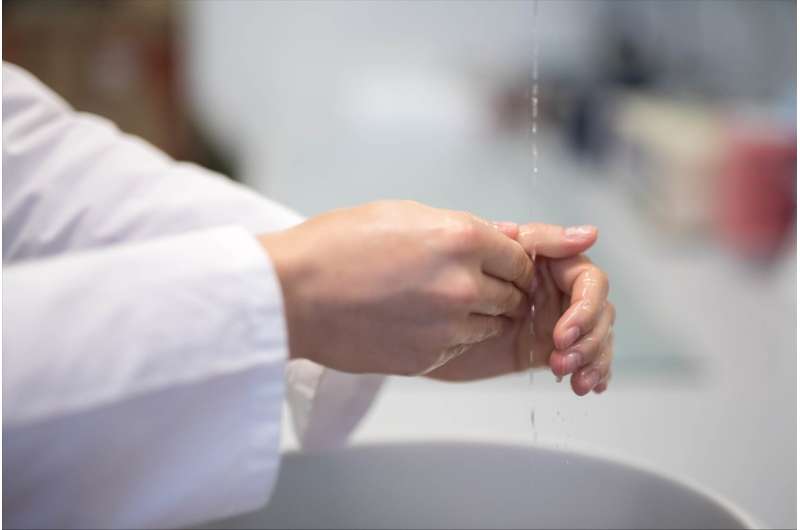High stability of the hepatitis B virus

At room temperature, hepatitis B virus (HBV) remains contagious for several weeks and can even withstand temperatures of four degrees centigrade over the span of nine months. When applied properly, disinfectants are effective – but only undiluted. These are the results gained by a German-Korean research team in a study using a novel HBV infection system in human liver cells.
Due to a lack of human research models, research had previously been conducted in duck hepatitis B viruses. Professor Eike Steinmann from the Department for Molecular & Medical Virology at Ruhr-Universität Bochum (RUB) and RUB alumnus Professor Marc Windisch from the Institute Pasteur Korea in Seoul published their report in the Journal of Infectious Diseases on October 24, 2018.
Hepatitis B is primarily transmitted through contact with blood. "Consequently, it should be easy to control, provided appropriate hygiene measures are implemented," says Eike Steinmann. However, there are frequently cases of people contracting the hepatitis B virus in hospitals or in the workplace.
Attempting to find out why, researchers had hitherto been forced to make use of the duck hepatitis B virus, which is related to the human virus. "However, those studies have only ever permitted rough estimates as far as the infectiosity of HBV is concerned," points out Steinmann. For their analyses, he and his colleagues utilised an HBV infection system in human liver cells, developed recently at the Institute Pasteur Korea, in order to obtain more realistic results. "The new HBV infection system enables researchers worldwide to finally conduct highly detailed studies of the human virus that had not been possible until quite recently," explains Marc Windisch.
Using this model, the researchers were able to demonstrate that the infectivity of HBV barely decreases at room temperature even after a few weeks, and that it remains highly stable at four degrees centigrade over a period of nine months. "Various alcohols and off-the-shelf hand sanitisers deactivate the viruses," says Eike Steinmann. "If the disinfectants are diluted, however, their deactivating properties are reduced. Luckily, diluting disinfectants is not common practice."
The researchers compared the efficacy of two alcohol-based WHO-recommended hand sanitisers against different viruses that have an envelope, such as the HBV. The comparison viruses included the Ebola virus and the hepatitis C virus. "Among all tested viruses, HBV demonstrated the highest resilience against both disinfectants," stresses Marc Windisch, Head of the Applied Molecular Virology Laboratory at the Institute Pasteur in Seoul.
The researchers recommend strict compliance with hygiene guidelines, in order to prevent HBV infections in the future.
More information: Thoa Thi Than et al. High environmental stability of hepatitis B virus and inactivation requirements for chemical biocides, The Journal of Infectious Diseases (2018). DOI: 10.1093/infdis/jiy620


















